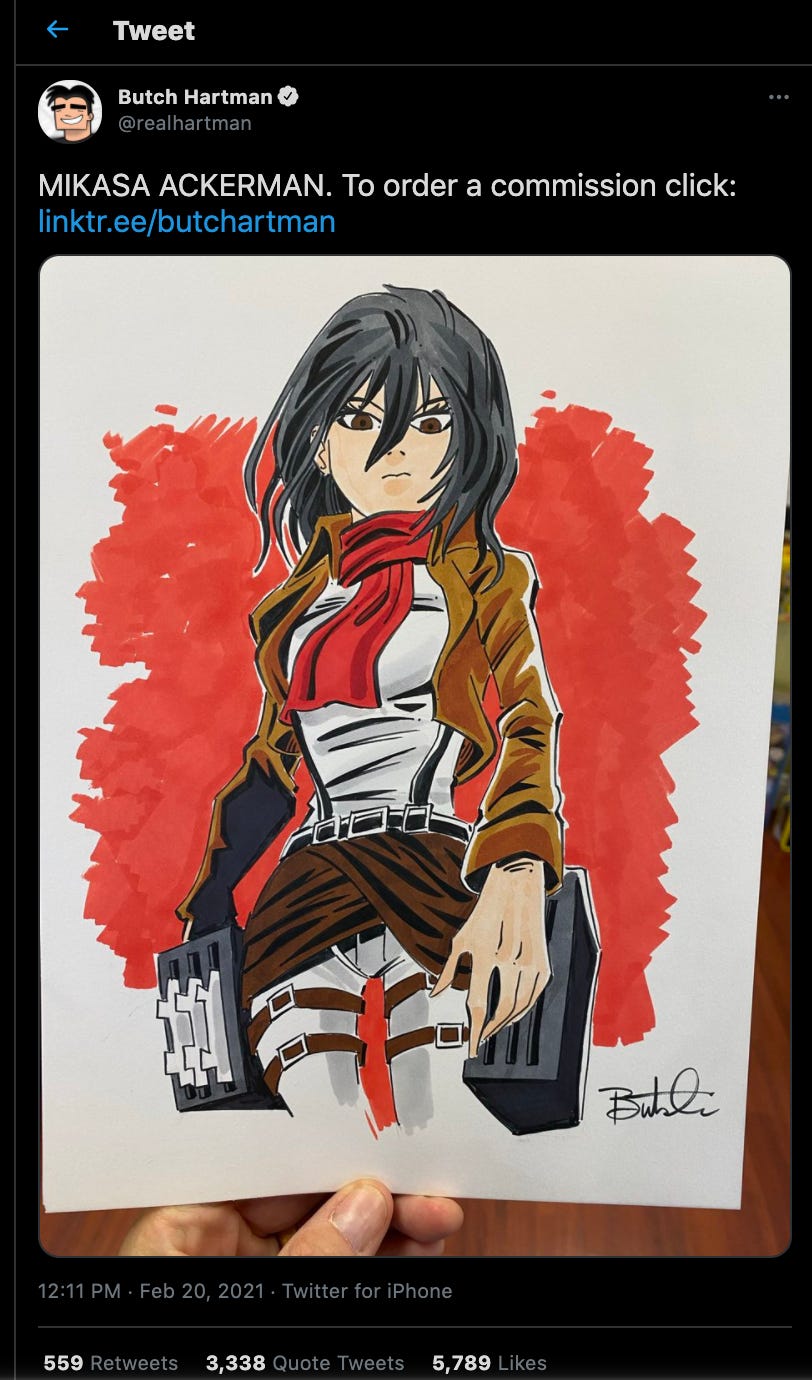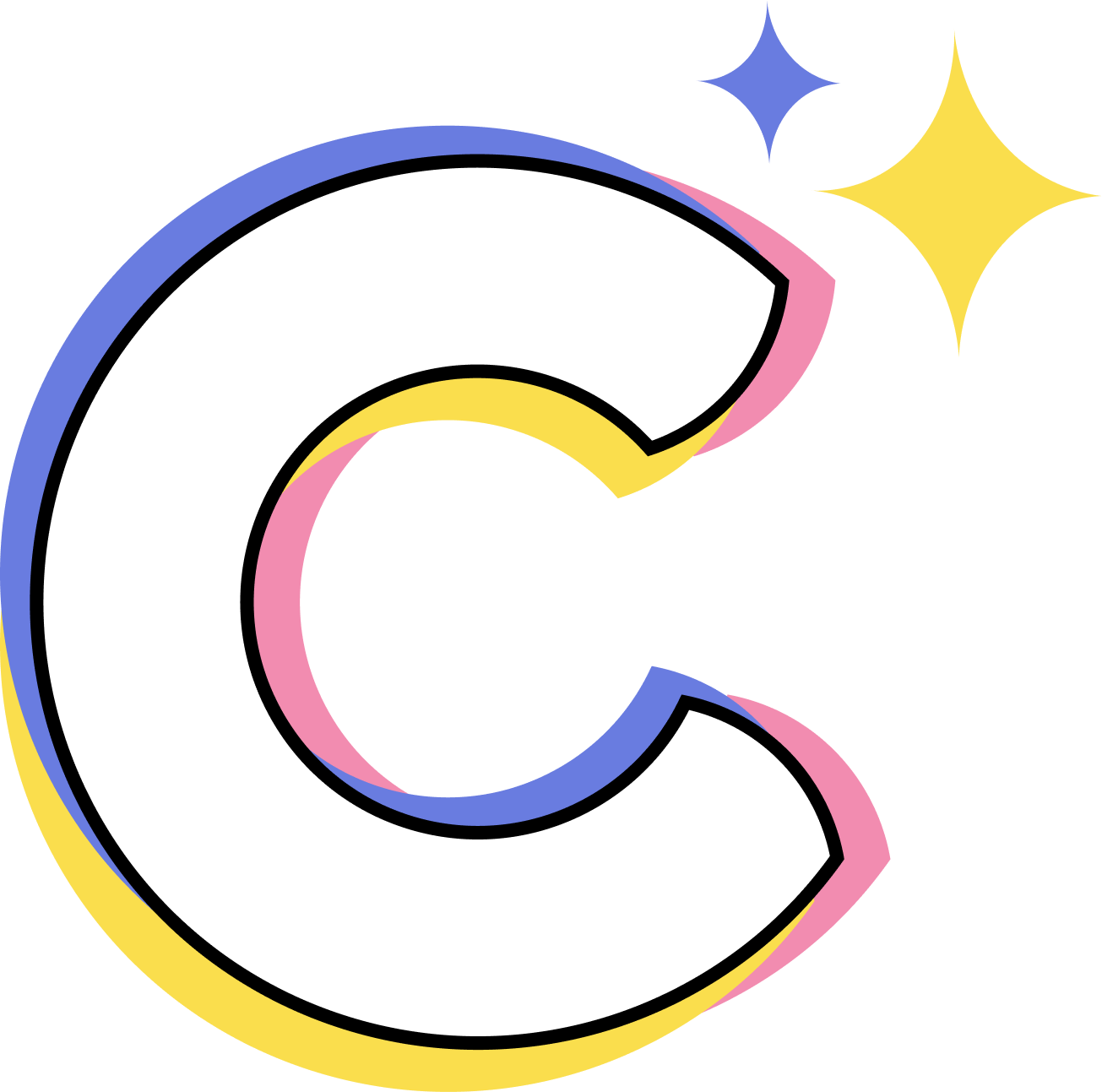On February 20, 2021, the art side of Twitter blew up in rage. The cause? “Fairly Odd Parents” and “Danny Phantom” creator Butch Hartman’s latest tweet.
In it, Hartman showcased this commission piece and advertised his commission service. However, fans turned furious when art by a Japanese artist from 2018 resurfaced… and looked strikingly similar.
Hartman’s reputation has not fully recovered since.
If someone as well-established as Butch Hartman could have his career and reputation permanently marred by taking others’ work, it just serves to emphasize how important it is for any artist — any creator — to be honest and understand the etiquette of crediting others for what isn’t their own. No one wants their ideas stolen and presented as someone else’s.
But where is the line between inspiration and theft? When is crediting appropriate, and how do you do it right?
💬Where and When to Give Credit: A Few Guidelines
First and foremost, if your creation is your own original idea, even if it’s inspired from elements of others, you do not have to credit. We see nods and references from one creative to another all the time, and it’s common to get inspired from what you see around you and take in. But a good rule of thumb is, if you aren’t sure if you should give credit or not, give credit. It’s better to lift others up when you did not have to than to be accused of having stolen work.
Then, the obvious: you have to credit others when you utilize others’ work. This may seem clean-cut stated here, but the lines can quickly become murky when modifications are made to or original layers are added atop the piece.
Since there is no issue in copying others’ work if it is done privately for your own personal growth and practice, it can be very tempting to go ahead and post the finished product, especially if it looks vastly different in the end. However, if you trace an artist’s work, it does not matter how different your version looks from their original. If you dub over an animation that is not yours, even if it is with your own voice, it does not make the whole creation yours. Regardless of what you do or how much you add after you have taken directly from someone else, your work cannot be entirely called an original, so you must credit the original creative.
But proper crediting is not merely slapping a “creds to” and tagging a user in the caption without warning. Alexa Kanarowski, a Fine Arts student in the College of Architecture, Art, and Planning, explained the best way she thinks we should credit others:
“It’s best to credit others directly. Be up front about it and make sure that information is readily available. I like to think about how I would want to be credited if the roles were reversed.”
As an artist, Alexa also explained how she goes about finding inspiration from other creators to create something new, rather than a “permutation of something that already exists.”
“I like to try to take inspiration from across mediums, so that I can avoid crossing any lines. For example, taking inspiration from a song to create photos is less likely to cause problems than using photos as inspiration for photos. I also try to focus on taking inspiration only from parts of a piece rather than a whole. If I like how a painter painted a portrait, I might take inspiration from their color palette and apply that to a still life, but not a portrait.”
When I asked Alexa about her struggles with crediting, she explained the challenge of the internet, and how it’s “become the norm is to just use things devoid of their context without crediting anyone.”
So I would conclude the following: even equipped with the knowledge on how to credit, sometimes it’s still best not to post. Sometimes, the original creative doesn’t want any reproduction of their work circulating that isn’t from them. In this case, you should respect their wishes and keep your inspired piece private. Due to this possibility, it’s always a good idea to ask before posting something that isn’t fully yours, even if you intend on giving credit!
🌱 By Crediting, We All Grow
While it might seem daunting to post a work that isn’t completely your own, remember that when crediting right, you are helping other creators. The etiquette of crediting is not in place to limit the ideas that creatives can make public, but to promote a community that is courteous and helpful to each other as we learn and grow. Keeping this in mind, we can contribute confidently to this creative community and have a supportive audience for our works as we lift up those who inspired us.
Euna
CC Writer
Euna is a senior majoring in English and Music in Arts & Sciences. She enjoys storytelling through all different mediums, from cinema to blogs to song to fiction.
Did this blog post supercharge your creativity? ⚡
We hope so. And we can’t wait to see what magic you make next. ✨
Take this email as the reason you’ve been searching for to dive into your next creative endeavor, and know that you’ve got a creative community backing you at every step of the way. 🙌
Website | Instagram | Twitter | Facebook |
✓





